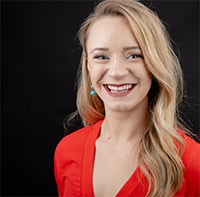EDITOR'S NOTE: This article was originally pubilshed on EMS1.com. EMS1 serves as the largest site for paramedics and EMTs to find expert industry-relevant content.
Background:
St. Dominic Hospital is a 400 bed primary stroke center in Jackson, Miss. The soon-to-be comprehensive stroke center currently sees about 1100 stroke patients per year from all over the state, from transfers to “drip-and-ships.” These patients are treated for a variety of strokes including ischemic strokes, hemorrhagic strokes and TIAs.
Wendy Barrilleaux has been the director of the program for four years. The stroke team (some of whom are pictured below in the photo courtesy of Barrilleaux) includes six nurse practitioners, several neurologists and interventionalists, as well as emergency room and radiology staff. She recently adopted an innovative communication platform that allows all of the staff, as well as EMS providers, to connect with each other and share.
Problem:
St. Dominic Hospital was looking to improve their door-to-needle time. The previous year’s goal was to reduce the time to below 60 minutes, which was a success. While an average of less than 60 minutes is a praiseworthy time, when dealing with stroke patients, every second, let alone every minute, counts. Time is tissue is the oft-repeated mantra. In their effort to continually improve, this year St. Dominic aimed to reduce that time down to 45 minutes.
In addition, the previous stroke activation process really didn’t start until the patient was at the hospital. This limited the amount of time that could be shaved off of the door-to-needle time and created tensionamong the staff. EMS would call in, but nothing would happen until the patient reached the hospital. Then, there would be a lot of calling around to different people in the hospital passing information along. Some team members complained that they didn’t have the right information at the right time.
Solution:
Pulsara first came to Barrilleaux’s attention at an international stroke conference in 2014. Unfortunately, at that time, the stroke program didn’t have the budget to accommodate the implementation of the platform. However, when the cardiac program was looking for a solution to replace the one they used to transmit EKGs, they asked Barrilleaux if she had heard of a company called Pulsara. “Pulsara was comparable in price,” she said, “we got lucky.” Pulsara’s robust features could meet the needs of both departments, making it an ideal choice from a performance and budget angle.
“The implementation was very easy, especially compared to other implementations we’ve done in the past,” said Barrilleaux. “With Pulsara, EMS activates [the stroke team via Pulsara] and we have the entire team ready in the ER, we have all the information we need. We just scan the patient and make a decision. We can tell a lot from the app: if they’re an IV TPA a candidate or if we can cancel the stroke early, for example, if the patient resolves en-route to the hospital.”
Results:
The results of the implementation were almost immediate. Since implementing Pulsara in June, door-to-needle time in the stroke program has decreased by an average of ten minutes. From January to June, under the old system, the door-to-needle time hovered around 54 minutes. In the months since implementing Pulsara, that number has dropped to an impressive 44 minutes. For interventional stroke cases, the hospital’s goal is to have a door-to-puncture time of less than 120 minutes at least 75% of the time. The average door-to-puncture time was 107 minutes. Prior to adopting Pulsara, St. Dominic was below the 120 minute threshold in 67.5% of cases. Once they adopted Pulsara, that number jumped to 86.6%, with an average door-to-puncture time of 98 minutes.
“The results were tremendous,” said Barrilleaux.
In addition, Barrilleaux noted that EMS professionals appreciate the instant feedback that Pulsara provides. Previously, EMS would drop off the patient and often not hear back for weeks, if it all. Now, they get an instant notification with treatment information. Within an hour, they know how the patient fared. “They really enjoy that,” said Barrilleaux.
 Hannah Ostrem
Hannah Ostrem
![St. Dominic Hospital Uses Mobile Technology to Achieve 44-Minute Door-to-Needle Time [Press Release]](https://ems-praetorian.netdna-ssl.com/article-images/stdomspic.jpg)
![[PRESS RELEASE] Published Research Finds Up to 31% Faster STEMI Treatment Times in Rural Hospital Setting with Pulsara](https://www.pulsara.com/hubfs/_1_website-page-blog-assets/pulsara-hosp-teams-assign-cardio-stemi-rn-1200x701.jpg)

